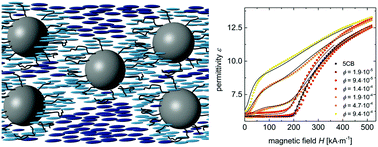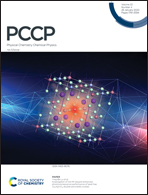Efficient ferronematic coupling with polymer-brush particles
Abstract
Switching of liquid crystal phases is of enormous technological importance and enables digital displays, thermometers and sensors. As an alternative to electric fields or temperature, magnetic fields are an interesting trigger, as they are on the one hand versatile to design, and on the other hand, they are compatible with a bouquet of applications. An interesting option to enable the magnetic switchability of nematic phases is by doping them with functional magnetic nanoparticles, but it remains a challenge to achieve well-compatibilized and stable ferronematic phases. Here, we report a new approach for the experimental realization of finely dispersed MNPs and nematic LC by creation of a surface-coupled mesogen-functionalized polymer brush, and the determination of their corresponding magneto-optical response. For this purpose, CoFe2O4 particles are equipped with a covalently attached polymeric shell carrying mesogenic groups and successfully dispersed in 4-pentyl-4′-cyanobiphenyl (5CB) to form a stable ferronematic phase at ambient concentration up to ∼1 vol%, as shown by DSC and Abbé refractometry. The magneto-optic response is detected in planar aligned LC cells. As compared to undoped 5CB, the hybrid system shows a significantly increased magnetic sensitivity, and the magneto-nematic surface anchoring is quantified by analysis of the magneto-nematic cross-correlation.



 Please wait while we load your content...
Please wait while we load your content...